Interview | Isabella Watling
Isabella Watling was born in London in 1990, and spent her formative years in the UK and Australia. From the age of 18 she trained at the Charles H. Cecil Studios in Florence where she returns periodically to teach portrait and figure painting. Her time at the studio gave Isabella a rigorous training in sight-size portraiture, following the tradition of masters like Van Dyck, Velázquez and Sargent. We joined Isabella for a nice coffe-break during her intense studio activity in London, an exclusive interview to deepen the technical and motivational aspects of her artistic process.
I’ve spent the last few months being interested in abstract art, hundreds of drop paintings and colorful geometric figures, and when I came across your profile it was like an epiphany, a homecoming. There is something reassuring in your art, a return to the origins that surprises with its warmth and intensity. Have you ever found your portraits out of time, in contrast with contemporary art?
Oh thanks that’s very kind. Yes, I spend a lot of time looking backwards at the tradition of life-sized oil-painting. The materials and techniques that I use haven’t really evolved much since the time of Tiziano.
I think the very concept of portrait is anachronistic in the era of selfies, but it’s your point of view that makes them expressive, vivid, capable of transferring a unique emotion to the viewer. How are your portraits born? Do you start from preparatory sketches or do you immediately paint on canvas?
For a commissioned portrait the patron decides whether they want a bust portrait, a three quarter length portrait or a full length. At the first sitting I will ask the subject to take up different poses and try out a variety of outfits to see what I think will work best. Once I have arranged something that inspires me, yes, usually, I paint immediately onto the canvas.
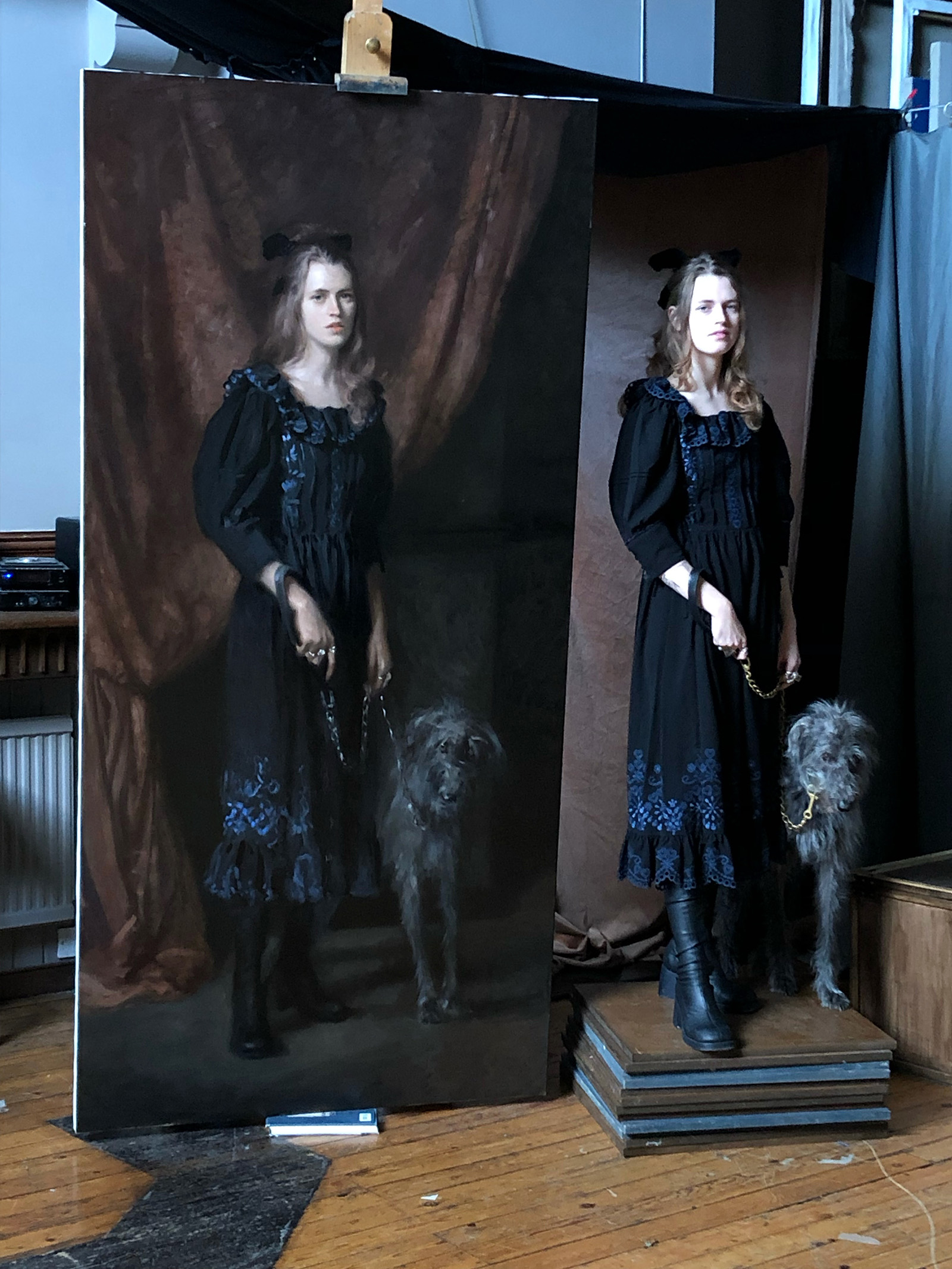
How important is it for you to get in touch with the subject before painting it? Do you know your subjects before portraying them?
The most important contact with the subject for me is that I am able to watch them closely, from a distance over a period of time in my studio under a high north light.
‘The importance of being Glenn’ was exhibited at the BP Portrait Award 2012 at the National Portrait Gallery, a major accolade from a timeless institution. Could you tell us the genesis of this painting?
Yes I was so pleased to exhibit my portrait there. I painted Glenn Haybittle several times whilst I was still a student at the Charles H. Cecil studios in Florence. Before his novels began to be published, Glenn posed for students so that he could afford his tortellini.

In your biographical notes you mention the importance of Van Dyck, Velazquez and Sargent in your pictorial training, at what age did you come into contact with these masters, and do you still study them or do you feel you have internalized them by now?
I was first introduced to these artists by my teacher, Charles Cecil at the age of 18. He has spent his life trying to recover a link to the old masters and give his students a context. I can’t imagine that it will ever benefit me to stop studying these three painters. As well as being instructive, they are a huge source of inspiration.
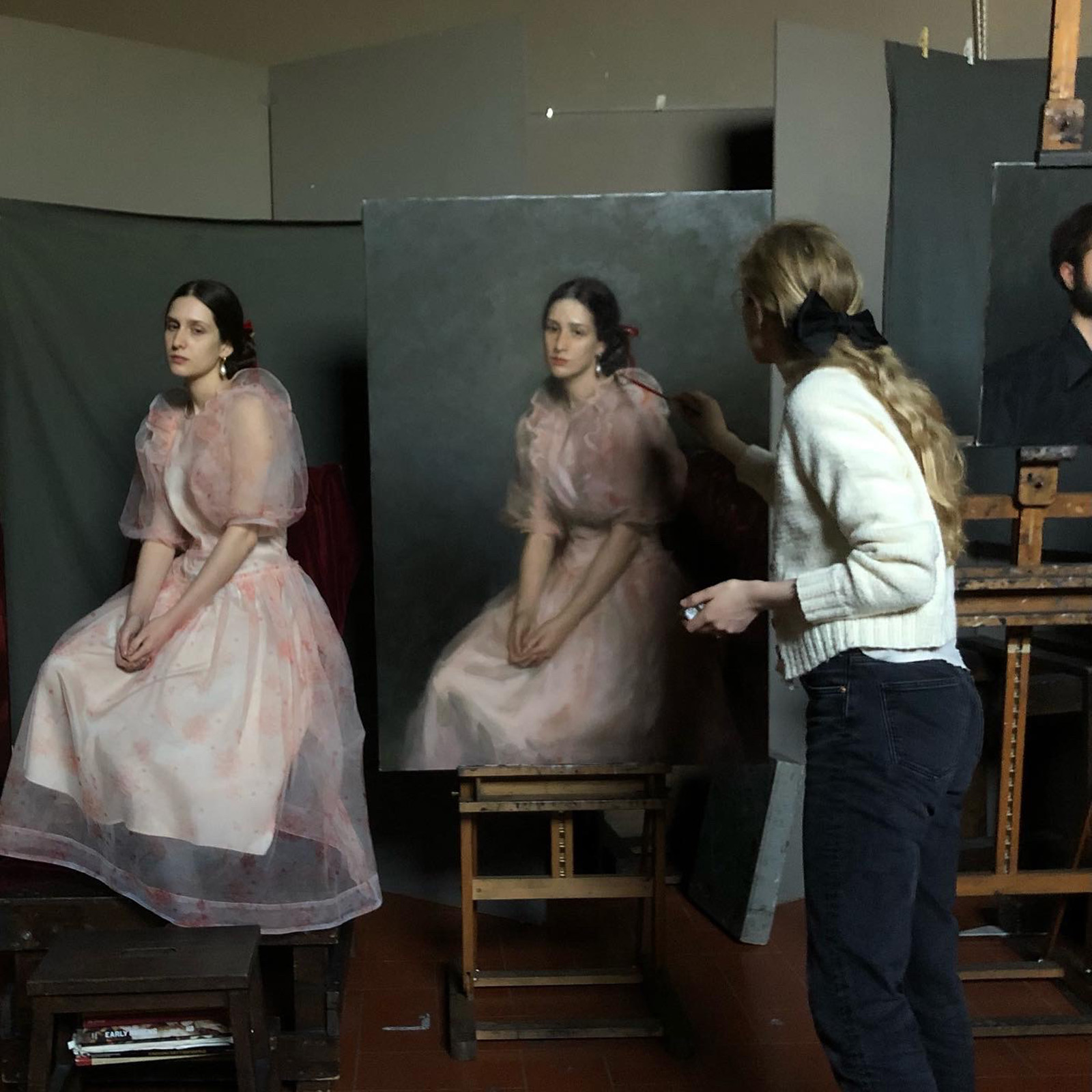
I know that you have remained in close contact with the Charles H. Cecil Studios in Florence where you return periodically to teach portrait and figure painting. What kind of relationship do you have with students, and do you find that teaching is useful in your pictorial research?
When I return to the studios in Florence I am really going there to assist Charles and to keep learning from him. There’s a great atmosphere in the school and I always leave feeling more inspired than when I arrived.
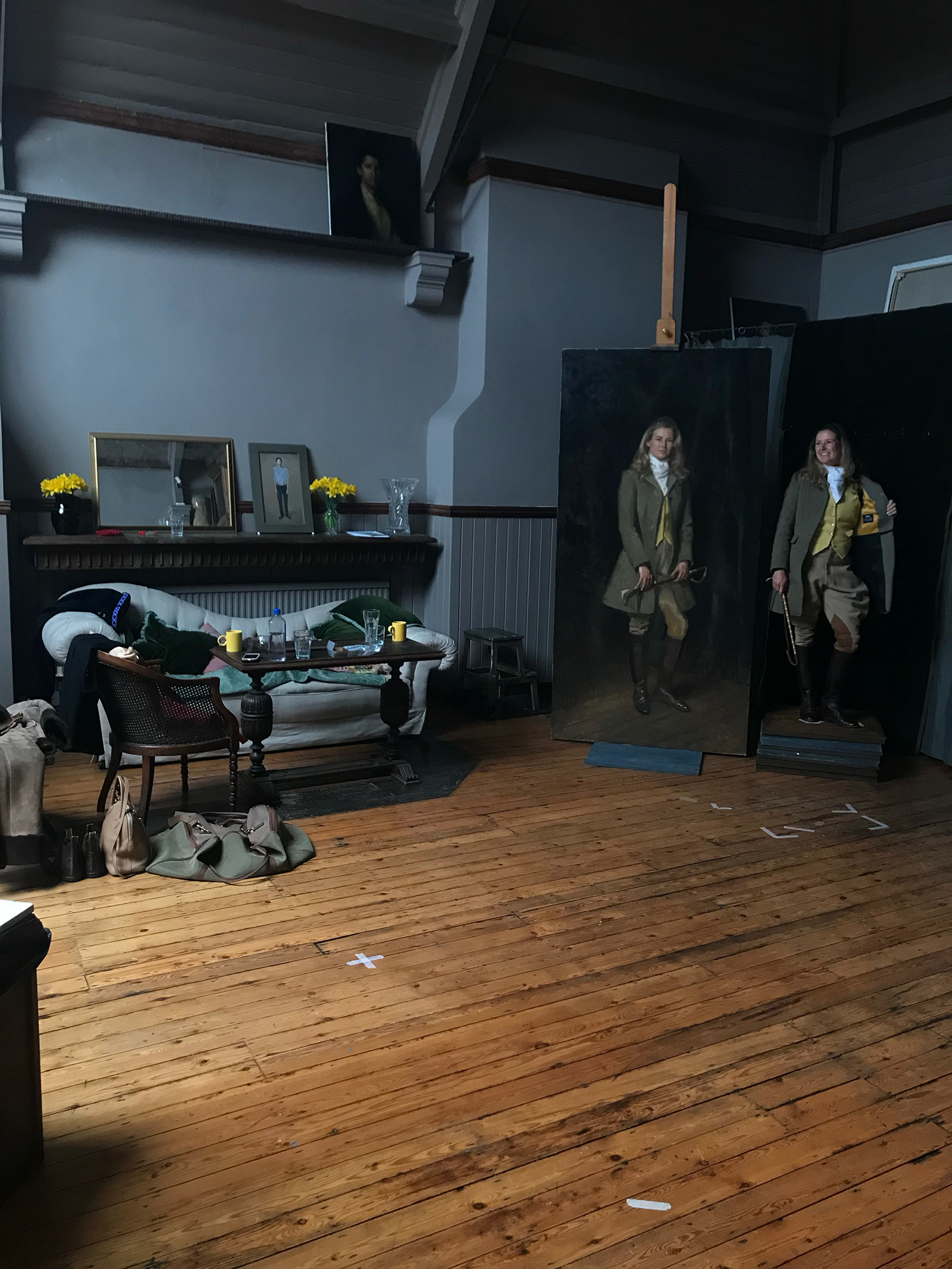
Tell me something about your very initial approach, what was the emotional urgency that prompted you to create the first artworks?
That’s a tricky one to answer. I guess the emotional urgency for my first ever attempt was a sort of nervous excitement that soon turned into frustration.
And now what do you think is the main engine of your artistic activity, what is the biggest thrust in your artistic production?
A desire to improve and get to the level of Velasquez.
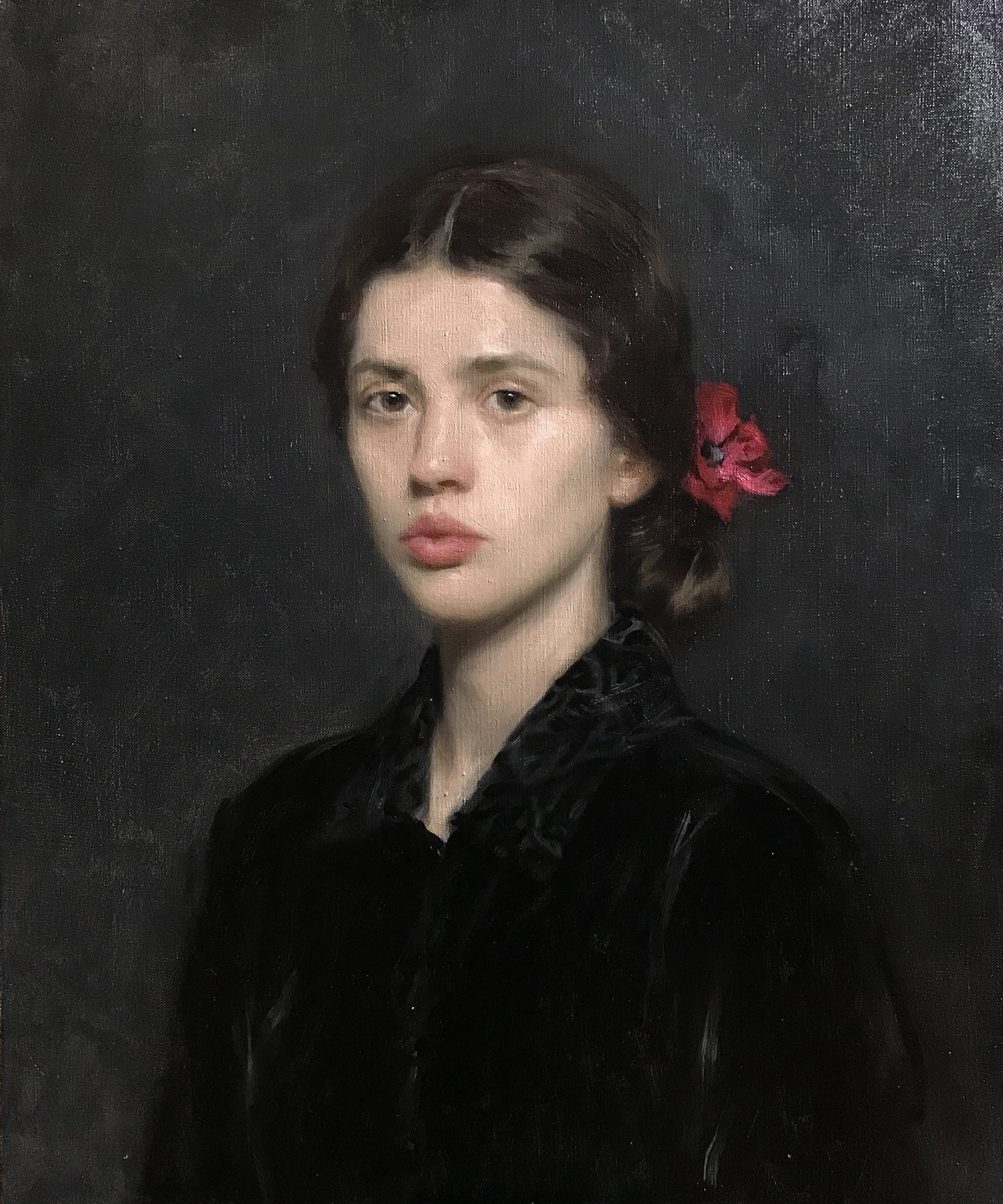
How do you organize your working week? Do you have fixed days for new ideas, others for painting process, others for promotion … or don’t you follow a pre-established schedule?
I paint most of the time. My diary is shaped by the sitters that I have organised to come and pose for me. My handsome husband George does a lot of the admin and background stuff so mostly I am free to paint. I have always got my eye out for good new outfits and props for future portraits.
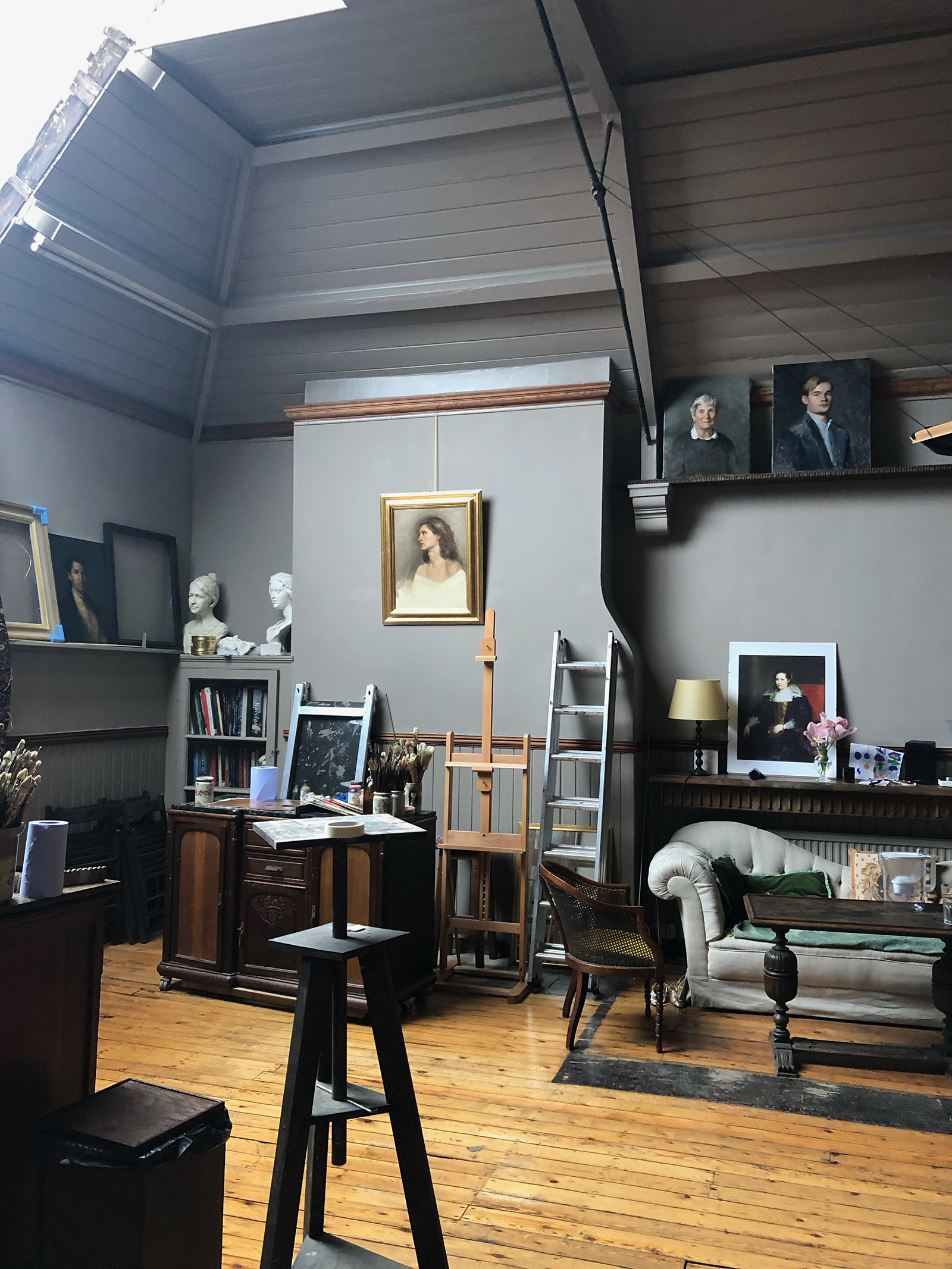
How much is hard for you to promote your work? I mean, do you have a good relationship with the social media and the promotion of your works online, or is it something you consider necessary but it doesn’t convince you at all?
It’s something I would like to get better at because otherwise I wont get any commissions. I should do more videos on social media but I am quite shy so it’s not straightforward. I am very grateful to be able to share my work so easily online but it is confusing for a painter because so much of oil painting is about scale and texture, both of which are lost in photographs.
Let’s play with time for a minute: you’ve booked a dinner table for 4, and you can invite whomever you want from Ramses II to Billie Eilish. Tell me your DDT, Dinner Dream Team.
Judi Dench, Queen Elizabeth 1st, Steve Irwin.
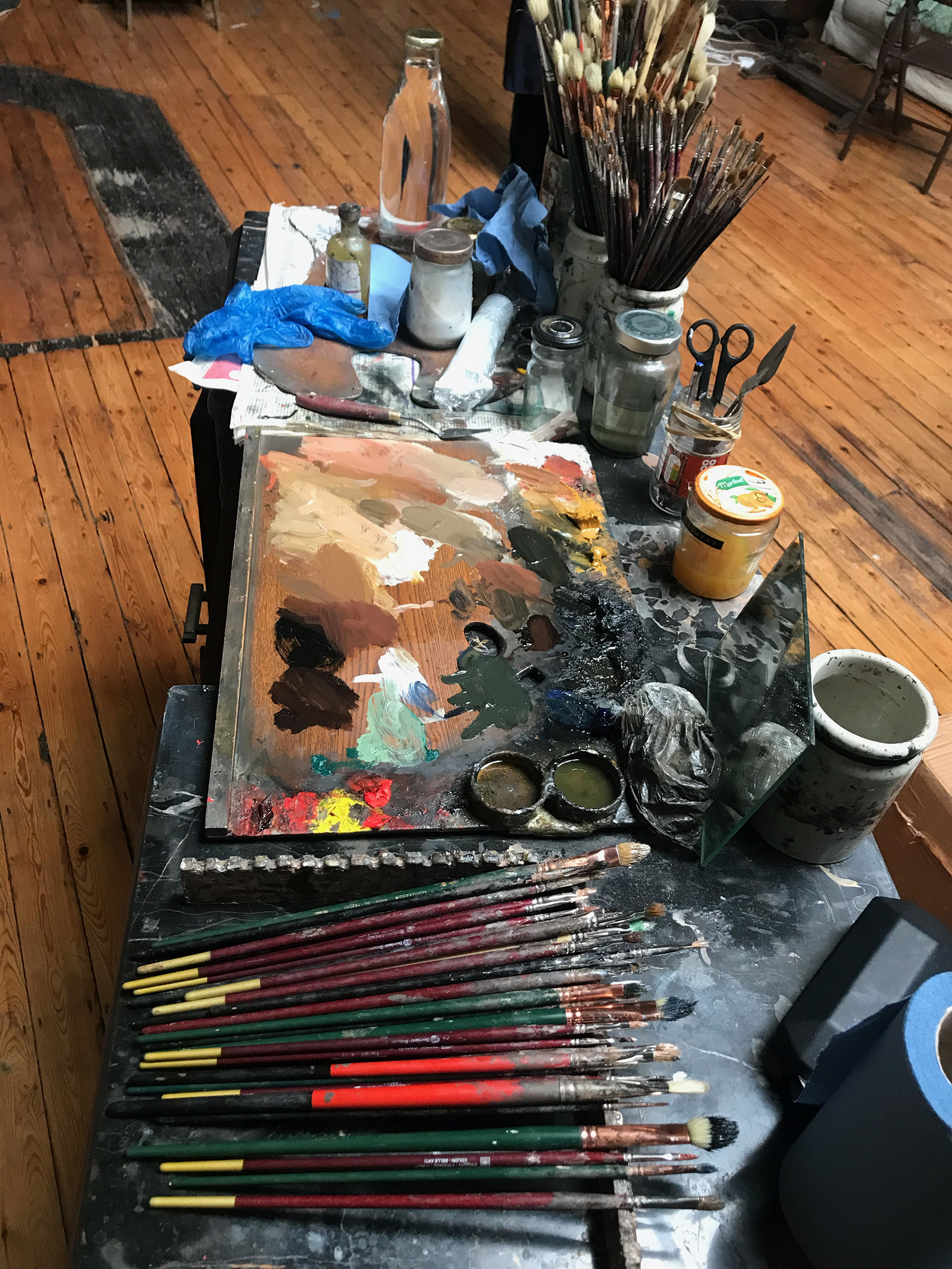
Here we go, Proust Questionnaire.
– Your favorite virtue?
In myself? My painting ability
– Your main fault?
My husband says I nag him too much
– Your idea of happiness?
Painting something inspiring
– If not yourself, who would you be?
– How you wish to die?
old
– What is your present state of mind?
Nervous, from all the questions…
Our time is running out, let’s leave ourselves with your vision for the future. Please tell me the projects you would like to achieve in the near future, and something you would finally get rid of?
Well, fairly recently I’ve moved into a great, historic studio, so I just hope I am able to keep working in there and that people will commission me to paint them. Something to get rid of? My Christmas weight gain!
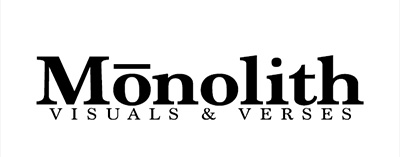
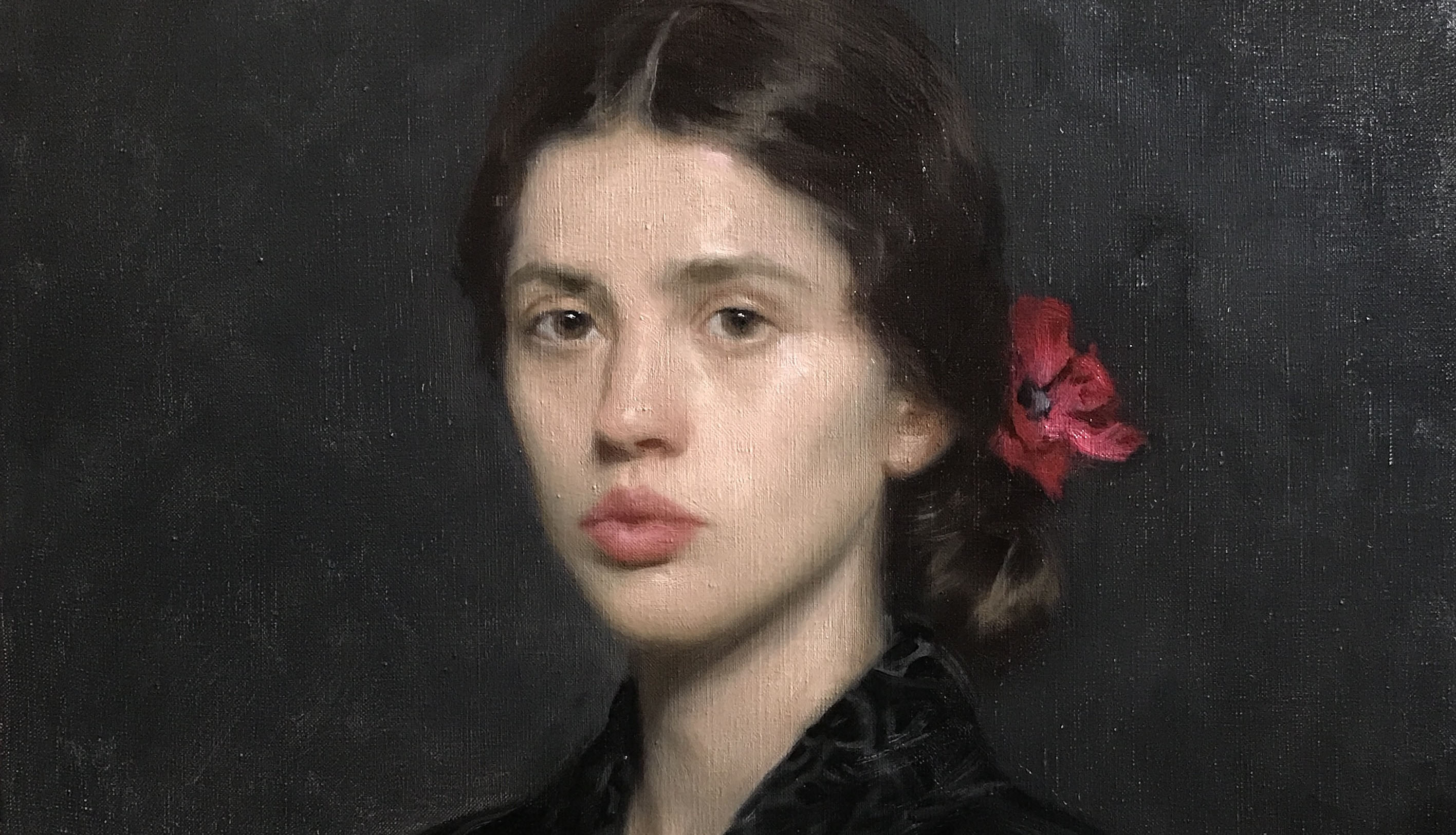
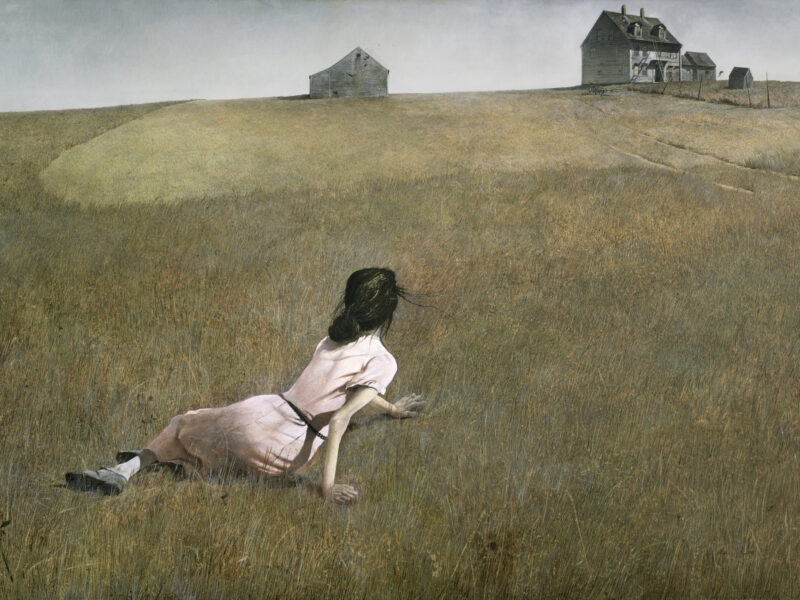
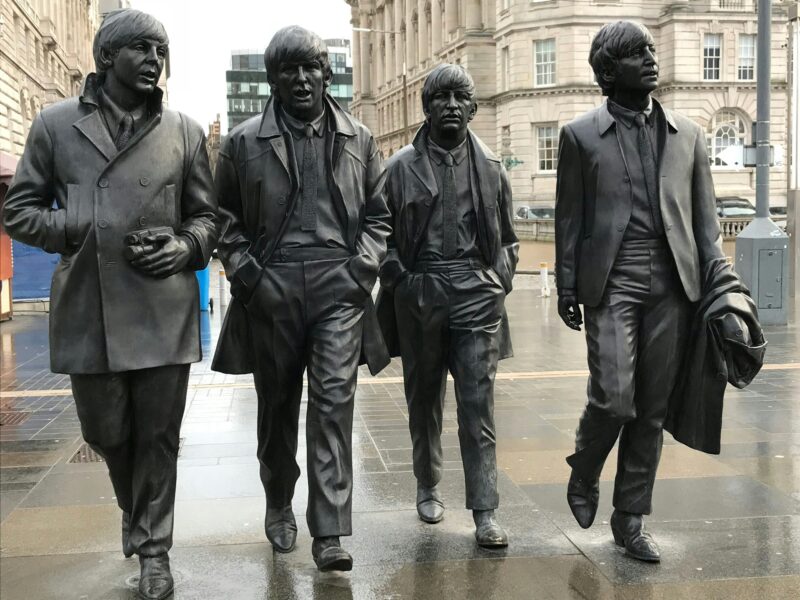
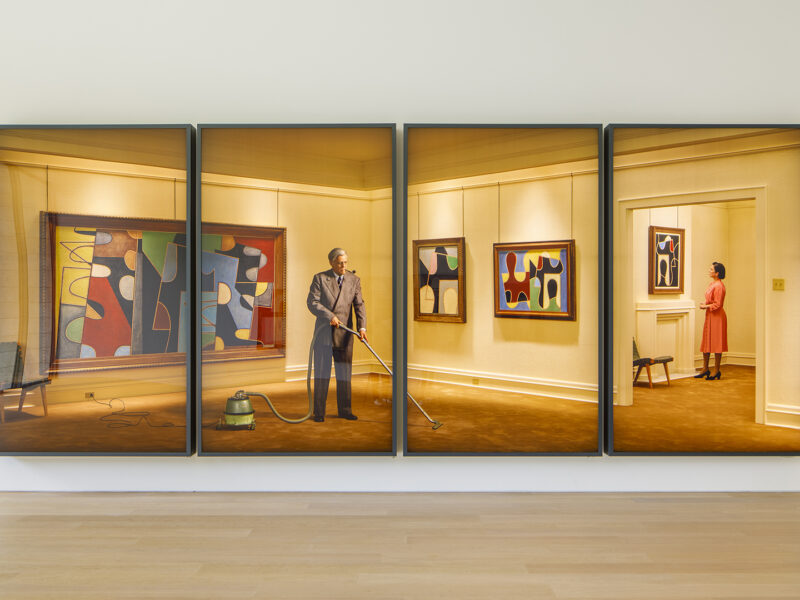

Michael Lyons
Amazing…. so honoured to know Isabella and George!!! Wonderful article!!